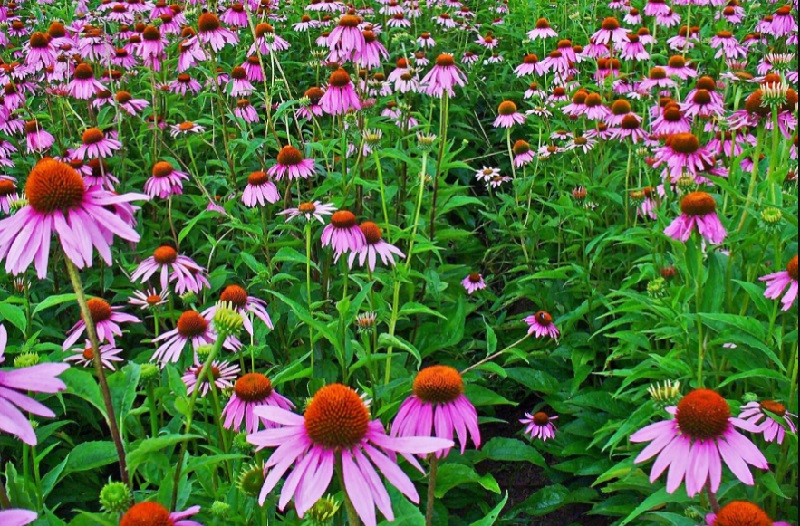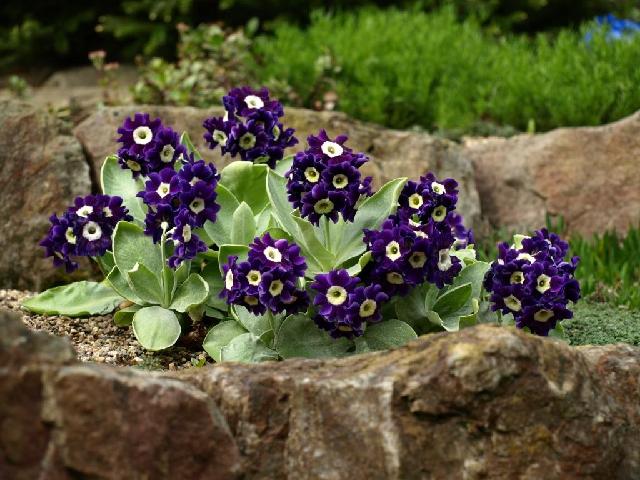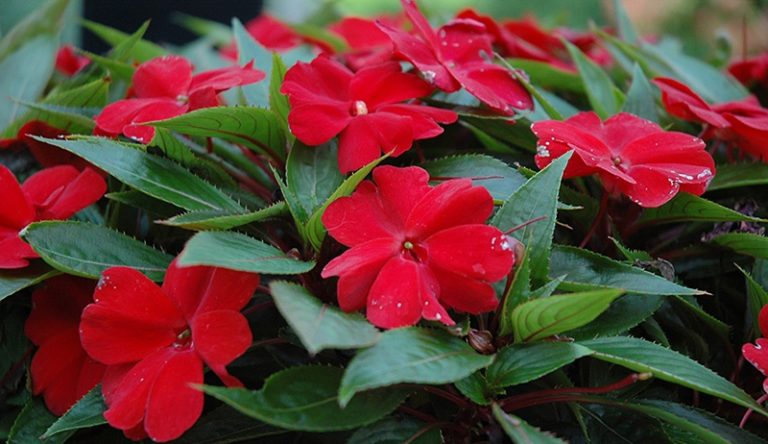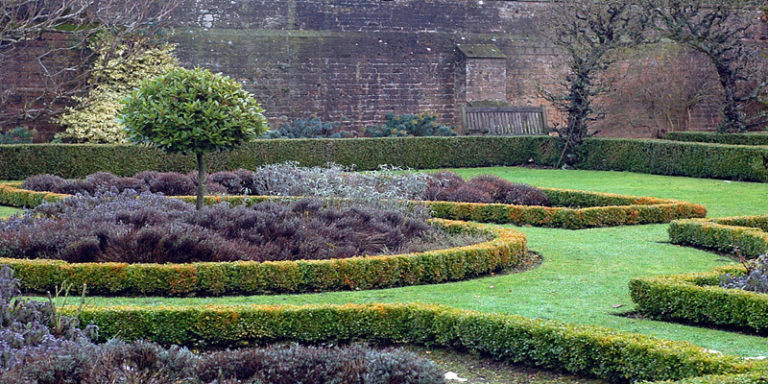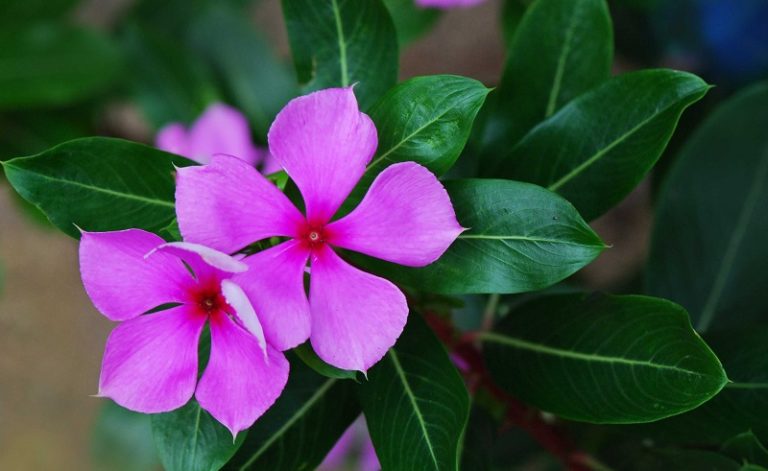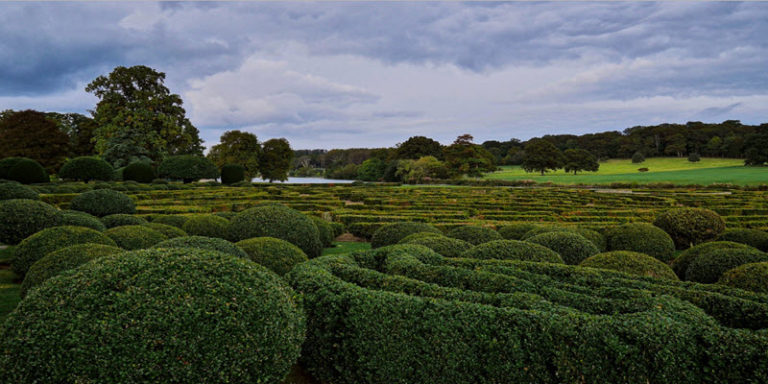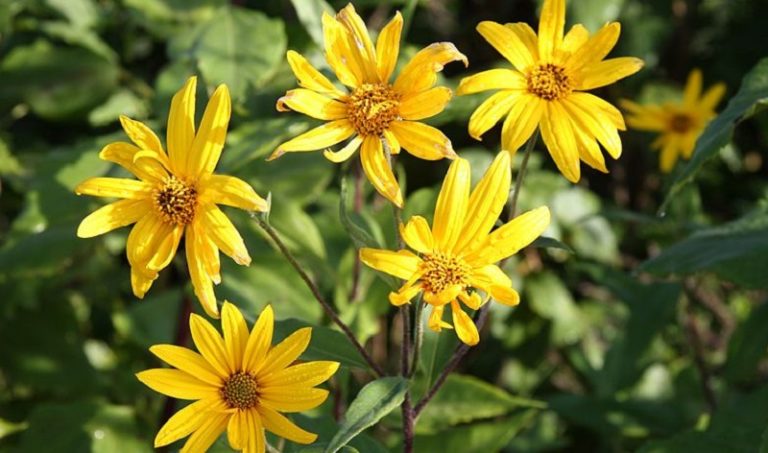Echinacea – cultivation, care
Echinacea is a beautiful flower that is unpretentious to the soil and has many useful properties that traditional medicine successfully uses.
The Echinacea flower is native to North America. It got its name due to the fact that when it fades and its leaves fall, it becomes like a prickly hedgehog.
Medicinal properties of echinacea
Echinacea is a perennial plant of the Asteraceae family with a creeping root. Try planting echinacea, alternating varieties with pink and white flowers, add a low pale echinacea to the foreground and you will be surprised at the decorative effect obtained. Of course, you will need 10-15 bushes, but with a skillful approach, the plant is easy to propagate by dividing the bush and seeds. You can make it bloom in the first season by sowing seeds in early February.
Where to plant echinacea
Echinacea loves the sun. Therefore, choose sunny places for her on your site. In one place, the flower will grow for 5-6 years, so prepare for its choice in advance.
The culture is undemanding to the composition of the soil, however, if there is sand in the chosen place, just add a bucket of garden soil and humus there and mix well.
When and how to plant echinacea
Semi-double varieties of echinacea are best propagated by dividing the bush, which will preserve their parental properties. Flowering plants are obtained from seeds after 2 years. Seeds are sown in late autumn or early spring. Unfortunately, there are only a few of them in standard packaging, moreover, they have low germination. Therefore, when buying seeds from even the most reliable company, be prepared for the fact that you will receive, at best, 3-4 seedlings. But you are doomed to success if you get freshly harvested seeds and sow them before winter.
The seeds are soaked, as usual, on a damp cloth, on a plate and covered with something on top so that the moisture does not evaporate. They germinate for a very long time and unevenly. Some germinate in two weeks, and some have to wait a month and a half.
Now our germinated seeds need to be planted in cups with soil mixture. For planting, usually use a ready-made store. Cups are selected small, with a diameter of 8-10 cm. We make a small, 0.5 cm depression in the soil, you can use a toothpick and carefully place the seed there so as not to damage it. Crush on top with a thin layer of soil and water from a spray bottle. Until a sprout appears, we keep the pots under cover. It is not necessary to moisten the soil often, only when necessary. Seedlings also do not need special warmth, a temperature of about 13-15 degrees is quite suitable.
Lavender comes in pink, purple, white, and even yellow.
Planting echinacea in open ground
The bed in a sunny place should already be ready and in mid-May we begin to plant echinacea seedlings on it. We make the holes deep enough, 10-15 cm, so that the roots enter with the entire lump of earth from the cup. This will make it easier for the flower to take root. We sow echinacea according to the scheme 30×30 cm. At the bottom of the hole you need to put a handful of compost with a spoonful of wood ash. Sprinkle the plant with earth on top and water abundantly. Until the plant takes root and grows, do not forget about watering.
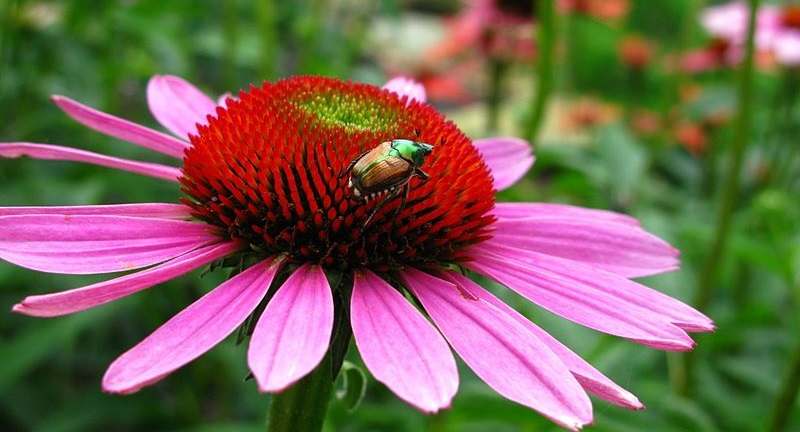
If you sowed the seeds in February, then flowering may occur in the first year, but do not worry if you did not wait for the flowers. Next summer, from mid-July to the end of September, you will enjoy the beauty of flowering.
Echinacea is quite resistant to diseases, but sometimes attacked by infections. Then you can observe that streaks appear on the leaves and the flowers are deformed. In this case, you need to apply a fungicide. But, then the plants will be suitable for medicinal purposes only after a year.
Echinacea care
The main care of the flower is uniform watering, removal of weeds and flowers that have already faded. By the way, if they are removed constantly, more new colors will appear.
Echinacea loves top dressing, both complex (store) and organic. The first feeding is carried out when the plants are accepted and begin to grow, you can use an infusion of weeds or mullein 1 to 10. The second top dressing is when the buds begin to set.
Can be propagated by echinacea by dividing the bush. It turns out much easier and faster. It is advisable to divide only in the spring, because in the fall some areas may not take root. In general, the plant does not tolerate root division and takes a long time to recover. If you decide to propagate a flower in this way, proceed as carefully as possible.

